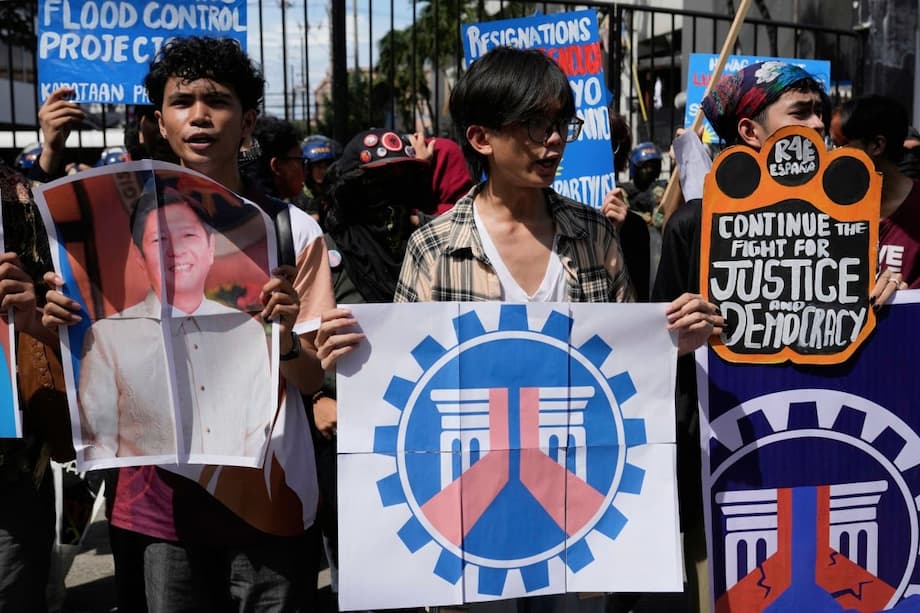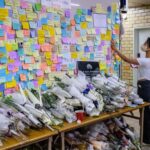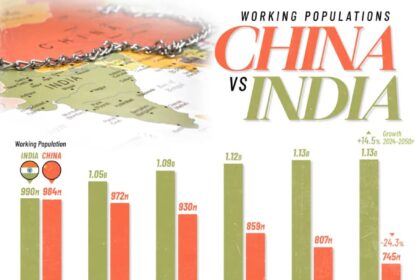Why the Flood Control Scandal Sparked Street Anger
Mud splattered on gates, walls tagged with thief and corrupt, and foul water balloons hurled at a government building became the signature images of a growing anti graft movement in the Philippines. The first targets were the offices of the Department of Public Works and Highways in Manila, then the protesters moved to the House of Representatives while lawmakers discussed the budget. Police blocked entry. Demonstrators, including families who saw their homes swamped during July floods, defaced the Batasan complex and marched on properties owned by contractors accused of siphoning public funds.
- Why the Flood Control Scandal Sparked Street Anger
- How the July Floods Exposed a Broken System
- What Investigators Found in the Projects
- Names, Kickbacks, and Denials
- Government Response and Promises
- What Protesters and Civic Groups Are Demanding
- Online Shaming and Street Actions
- Regional Parallels and the Risk of Escalation
- Why Accountability Is Hard and What Might Change
- Key Points
The outrage follows a simple question that thousands of flood victims now ask. How did so much money vanish while streets turned into rivers again this year. Since 2022 the state has spent about 545 billion pesos on flood control, according to official data. A government ordered audit, disclosed by President Ferdinand Marcos Jr., found projects that were incomplete, substandard, poorly documented, or missing on the ground. Investigators flagged contracts with identical costs despite different locations. The audit also said a small circle of contractors captured a large share of the money, with only 15 of more than 2,000 accredited firms cornering around 20 percent of the budget, Reuters reported.
The shock of those findings collided with real world loss. July floods across Metro Manila and nearby provinces, fueled by monsoon rains and storms, left at least 26 people dead and displaced tens of thousands, according to local and international reports. Damage reached more than 6.12 billion pesos. Protesters argue that funds meant to keep communities dry instead enriched political patrons and favored contractors. That accusation now sits at the heart of legislative inquiries and street actions.
How the July Floods Exposed a Broken System
The Philippines faces around 20 tropical cyclones each year. Metro Manila sits on low lying flood plains connected to the Marikina River, the Pasig River, and Manila Bay. Runoff from upland areas rushes into silted rivers and clogged drains. Coastal neighborhoods experience land subsidence while unplanned growth narrows waterways and blocks natural outfalls. Flood control only works when capacity matches the volume and speed of water that arrives during intense rain. When projects are absent or built poorly, streets can turn into canals in minutes.
Flood control spending covers a wide range of works. Agencies fund river dredging, pumping stations, dikes and seawalls, detention basins that temporarily store stormwater, taller bridges that do not act like dams, and channel widening with concrete protection. These jobs depend on accurate site surveys, hydrologic modeling, and strict supervision. Even small mistakes can break a system. A pump sized for modest rains will fail during peak monsoon. A canal built without a clear outlet will become a stagnant pond that spills into homes. When construction standards are ignored, protective walls crack and erosion returns.
What Investigators Found in the Projects
President Marcos disclosed results of an internal audit that stunned even seasoned watchdog groups, according to Reuters. Out of roughly 545 billion pesos in flood control spending since 2022, auditors saw patterns that point to serious abuse. Thousands of projects were flagged as substandard, poorly recorded, or missing on the ground. Some proposals and contracts carried identical price tags despite different sites. That is a classic red flag for templated paperwork and weak oversight.
Another discovery fed public anger. A very small cluster of contractors won a large share of the budget. Only fifteen firms out of more than two thousand accredited contractors captured about one fifth of the money. Separate reports, including those cited by regional media, described contracts issued for roads and canals that do not exist. The picture that emerged was of paper projects, rushed payments, and public money that did not translate into actual protection from floods.
These findings triggered hearings in both chambers of Congress and a cascade of complaints to a new government website set up to receive tips. Thousands of citizens filed reports about anomalies in their towns. For communities that have hauled furniture out of waist deep water too many times, the audit turned years of rumor into a record they could point to.
Names, Kickbacks, and Denials
Allegations sharpened when contractor couple Pacifico and Sarah Discaya testified in a nationally televised Senate inquiry. The pair alleged that at least seventeen members of the House of Representatives demanded kickbacks of about 25 percent of each approved project to help them win contracts. They told senators they kept records of bribes and said they fear for their safety, the Associated Press reported. Most other construction firms interviewed by investigators denied paying bribes.
House Speaker Martin Romualdez, who was named by the couple, denied the allegations. The Discayas had already drawn public attention for a fleet of luxury cars. Police have seized dozens of high end vehicles as part of the probe, according to local reports. Church leaders urged criminal prosecutions and the return of stolen wealth, while civic and business groups pressed for an independent inquiry with the power to file charges.
The Catholic Bishops Conference of the Philippines framed the scandal in moral terms. Cardinal Pablo Virgilio David warned about what corruption does to a country.
“Corruption drowns the nation’s future and prevents building a resilient society.”
Government Response and Promises
The fallout reached the Department of Public Works and Highways. Secretary Manuel Bonoan resigned. His successor, Vince Dizon, suspended all bidding for locally funded flood control projects, ordered courtesy resignations from public works officials, and promised to permanently blacklist firms involved in fraudulent work, according to Reuters and Rappler. The Philippine Contractors Accreditation Board revoked the licenses of companies linked to the Discaya family.
President Marcos said he would create an independent commission to investigate and file cases. A public website for reporting anomalies is now active and has received thousands of complaints, the Associated Press reported. The Palace has urged calm. Press officer Claire Castro said the government does not want Indonesia style unrest and emphasized due process while law enforcement tries to prevent clashes.
An alliance of 30 business and civic organizations issued a rare joint statement calling for a fully independent probe into what they described as excessive corruption in infrastructure projects, Reuters reported.
“We express outrage, disgust and disappointment over the shameful, unabated, continuing and excessive acts of graft and corruption by many officials in Congress, the executive department and local government units. While we take note of the President admonishing the corrupt in government, we are concerned that the guilty among these officials will continue their merry way of robbing the people and filling their pockets.”
Marcos has used stark language to describe the scale of wrongdoing. In remarks about the audit, he called the situation horrible and said those responsible would face charges.
“This is horrible,” he said, announcing plans for an independent commission and a crackdown on fraudulent projects.
What Protesters and Civic Groups Are Demanding
Street actions have grown in Manila, Pasig, Cebu, and other cities. Outside the Batasan complex, protesters tossed paint and chanted calls to jail corrupt lawmakers as a House committee convened to review the proposed 2026 budget of the public works department, which would reach about 881 billion pesos. Youth groups rallied outside a contractor headquarters in Pasig, denouncing what they called ghost projects and demanding accountability from the Discaya family and their partners in government. Business associations, social workers networks, and civil society alliances have put forward a concrete list of actions for the administration and Congress.
- Create an independent review committee for flood control projects from 2022 to the present, with findings and contracts published in full.
- End opaque congressional insertions in public works budgets and disclose all district level projects before final budget approval.
- Publish geotagged photos, bills of quantities, progress reports, and as built plans for every project so citizens can verify work.
- Freeze the assets of suspect contractors, enforce a nationwide blacklist, and pursue criminal and civil cases to recover money.
- Run lifestyle checks on officials who sign off on large projects and protect whistleblowers and witnesses from retaliation.
- Improve community monitoring and shift more funds to drainage clearing, pump repair, and other maintenance that produces quick relief during monsoon season.
Online Shaming and Street Actions
Much of the mobilization has unfolded online. A wave of posts and videos exposed luxury vehicles and lavish homes said to belong to contractors and their relatives. Journalist Karen Davila called the trend kurakot shaming, a direct appeal to reverse a culture that celebrates ill gotten wealth. Rolling Stone Philippines noted her call for the public to shame rather than admire those who display riches tied to public money.
“It is high time people stopped looking to corrupt politicians as inspiration and started shaming them for their ostentatious displays of wealth,” Davila said in a post on X.
Officials and local leaders appealed for nonviolent action as street protests grow. Pasig City Mayor Vico Sotto urged demonstrators to avoid rioting for safety, and encouraged the public to stay engaged with oversight efforts as the city coordinates with national agencies.
“Citizens should not feel hopeless, the momentum is on the right side now,” Sotto said.
Regional Parallels and the Risk of Escalation
The scandal arrived as Southeast Asia grapples with wider frustration over corruption and economic disparity. In Indonesia, mass protests erupted across 32 provinces after news of generous perks for members of parliament. Several regional parliaments were set ablaze. Authorities reported deaths and injuries. The government revoked the housing allowance that triggered anger, suspended overseas trips for legislators, and promised inquiries while warning against violence.
Philippine officials say they want to avoid a similar spiral. Malacanang has asked citizens to allow investigations to proceed while blocking any move toward unrest. In Malaysia, a procurement reform bill passed at speed drew criticism from opposition lawmakers and civil society who said the process lacked transparency. Across the region, citizens are pushing governments to restore trust by cleaning up contracting and ensuring that public funds produce real services.
Why Accountability Is Hard and What Might Change
Cleaning up public works is rarely easy. Procurement rules are complex, oversight capacity varies widely, and political networks link contractors, lawmakers, and local officials. Budget insertions that appear late in the process can direct funds to pet projects without careful planning. Field engineers can face pressure to certify work that is behind schedule or outside the original scope. Whistleblowers fear harassment and lawsuits that drain savings and deter testimony.
Reform advocates point to steps that deliver results. Open contracting that publishes bidding documents and winning bids in formats that the public can analyze makes it harder to hide irregularities. Geotagged photos and satellite checks confirm that a project exists at the right location and matches the design. Randomized third party inspections reduce collusion. Stronger whistleblower protection and a well staffed ombudsman can move cases forward. Permanent blacklists for bogus firms, lifestyle checks for officials who sign off on large projects, and aggressive asset recovery can deter repeat abuse. Congress can curb opaque budget insertions and require full disclosure of district level projects before the budget is approved.
Short term relief still matters. Clearing silted channels before peak monsoon, repairing pumps, and cutting illegal obstructions can reduce flood depth even as big cases work through the courts. Citizens groups say sustained pressure is the only way to keep reforms from stalling. A large rally has been planned in Manila for September 21. The public mood in the coming weeks will shape how far investigations go.
Key Points
- Protests erupted in Manila and other cities after an audit found widespread anomalies in flood control projects funded since 2022.
- About 545 billion pesos has been spent on flood control, yet many projects were incomplete, substandard, poorly documented, or nonexistent, according to official findings.
- Only 15 of more than 2,000 accredited contractors cornered around 20 percent of the budget, raising concerns about favoritism and rigged outcomes.
- Contractors Pacifico and Sarah Discaya alleged in Senate testimony that at least 17 House members demanded 25 percent kickbacks; they said they kept records; those named denied wrongdoing.
- Public works secretary Manuel Bonoan resigned; successor Vince Dizon suspended bidding for locally funded flood control projects and moved to blacklist suspect firms.
- President Ferdinand Marcos Jr. plans to form an independent commission and has launched a reporting website that has received thousands of complaints.
- Business, civic, and church groups demand full transparency, prosecutions, and recovery of stolen funds; a large rally is planned for September 21.
- Officials urge calm, saying they do not want Indonesia style unrest, where protests over perks for lawmakers turned deadly.












